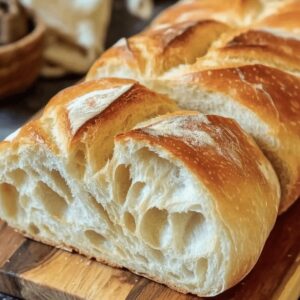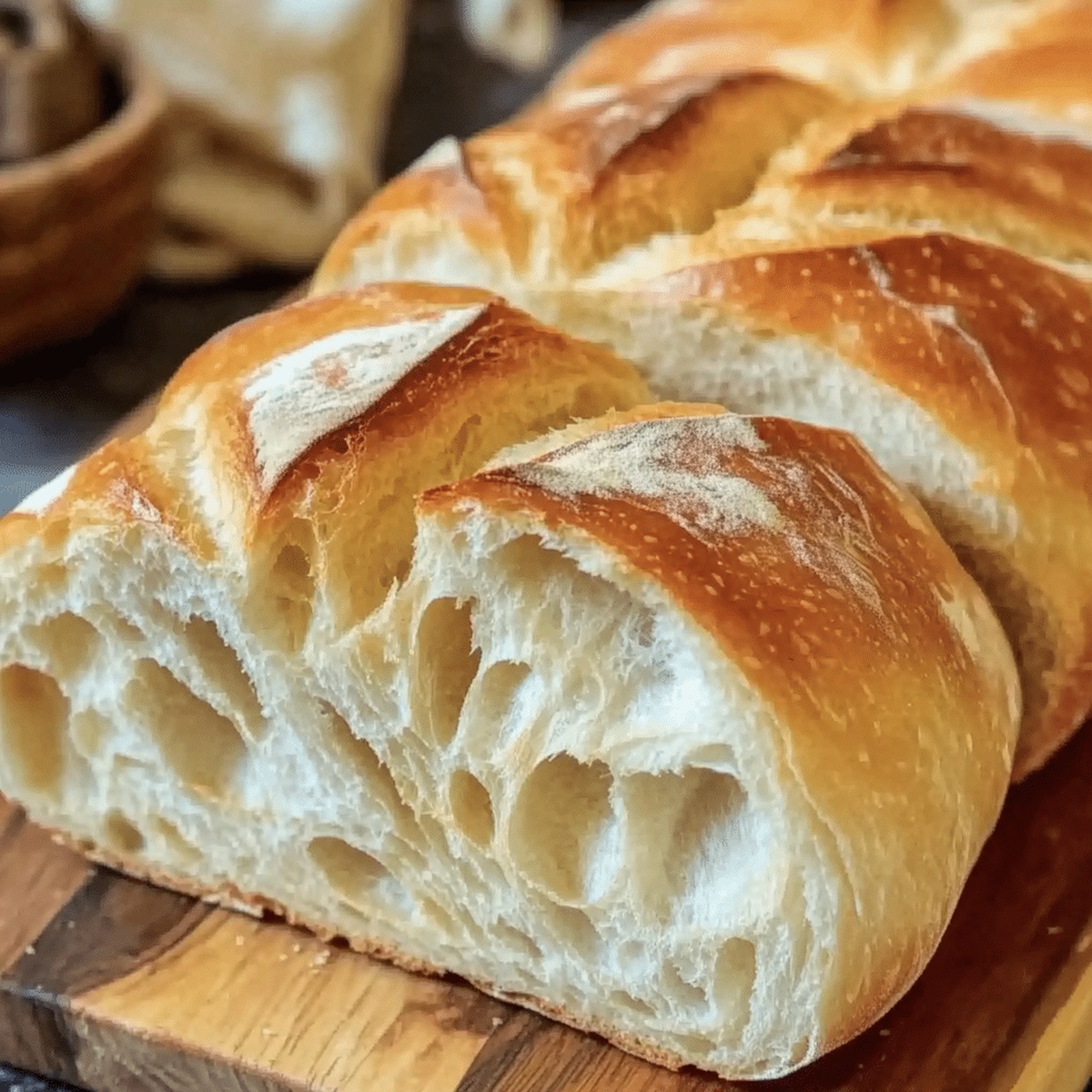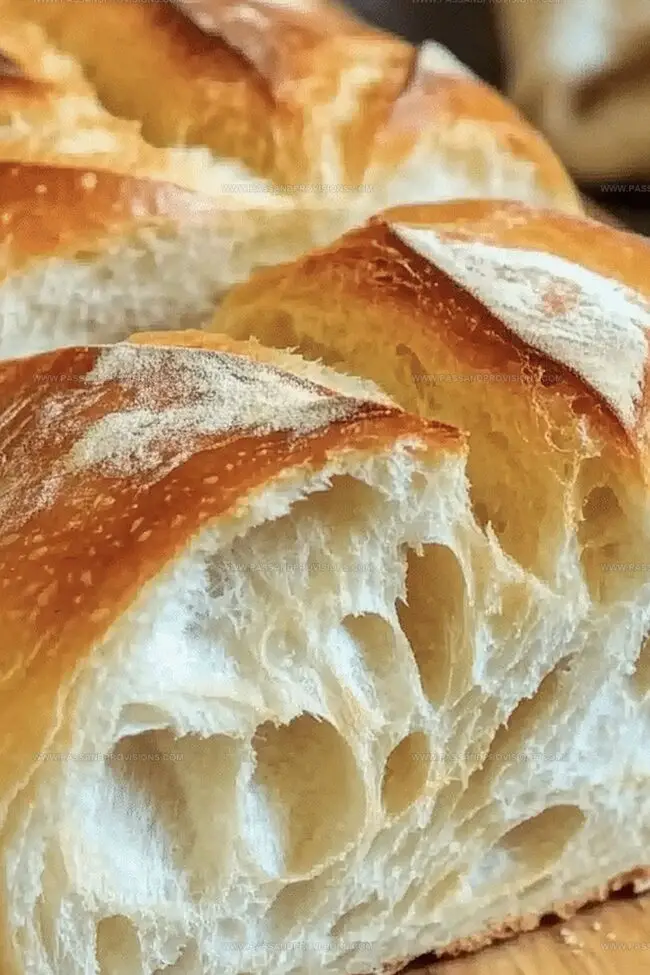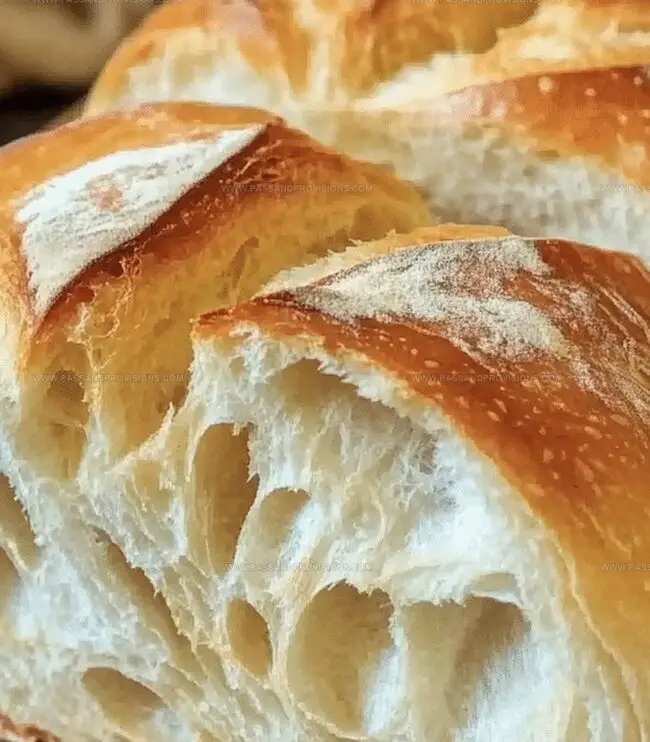Incredibly Soft & Fluffy French Bread Recipe for Home Bakers
Crafting this soft fluffy french bread recipe brings pure magic into your kitchen.
Crisp golden edges peek from beneath a tender crumb that whispers homemade comfort.
Bakers discover unexpected joy when kneading simple ingredients into something extraordinary.
Mediterranean flour transforms into a delectable canvas waiting for your creative touch.
Professional techniques merge with straightforward steps anyone can master.
Fragrant aromas will soon dance through your home, promising delightful moments ahead.
Weekend baking becomes an adventure you’ll want to savor with every delicious slice.
Why Everyone Loves Soft Fluffy French Bread
Simple Ingredients for Bakery-Style Bread
Primary Ingredients for Dough:Rising and Binding Ingredients:Finishing and Decoration Ingredients:Instructions for Baking Soft French Loaves
Step 1: Awaken Magical Yeast
Mix warm water, yeast, and sugar in a large bowl. Gently stir and wait 5 minutes until frothy bubbles dance across the surface, showing yeast is alive and ready.
Step 2: Create Dough Symphony
Ingredients for dough:Pour salt and olive oil into yeast mixture. Add flour gradually, stirring after each addition until soft, slightly sticky dough emerges.
Step 3: Massage Dough To Perfection
Move dough onto floured surface. Knead with gentle hands for 5-7 minutes, transforming dough into smooth, stretchy texture. Add tiny flour sprinkles if dough feels too sticky.
Step 4: First Dough Transformation
Slide dough into greased bowl, coating all sides. Cover with clean towel. Rest in warm spot for one hour until dough doubles in volume.
Step 5: Shape Magnificent Loaves
Gently deflate risen dough. Divide into two equal portions. Roll each piece into rectangle. Roll tightly from long edge, creating beautiful log shape. Seal edges carefully.
Step 6: Second Rising Adventure
Place loaves seam-side down on baking sheet. Cover with kitchen towel. Allow 30 minutes for second rise until loaves look plump and promising.
Step 7: Prepare Baking Magic
Warm oven to 375F. Whisk egg with water for golden glaze. Brush loaves gently to create beautiful shine.
Step 8: Bake Into Golden Perfection
Slice three diagonal lines across loaf tops. Slide into oven. Bake 20-25 minutes until golden brown and hollow-sounding when tapped.
Step 9: Cool And Celebrate
Transfer loaves to wire rack. Let bread rest completely before slicing to preserve beautiful texture.
Tips for a Pillowy Crumb and Crisp Crust
Best Practices for Storage and Reheating
What to Pair with Homemade French Bread
Variations and Add-Ins for More Flavor
FAQs About Fluffy French Bread
Kneading develops gluten in the flour, which creates the bread’s signature chewy texture and helps it rise properly. Proper kneading ensures the bread will have a light, airy structure with good elasticity.
When you mix yeast with warm water and sugar, it should become frothy and bubbly within 5-10 minutes. If the mixture doesn’t foam or look alive, your yeast might be old or dead, and you’ll need to replace it.
Yes, the egg wash is optional. It helps create a golden, shiny crust, but you can skip it. Alternatively, you can brush the loaves with melted butter or olive oil for a similar effect.
Slashing allows the bread to expand evenly during baking and creates a beautiful decorative pattern. It also helps control how the bread rises and prevents uneven splitting of the crust.
Print
Soft Fluffy French Bread Recipe
- Total Time: 45 minutes
- Yield: 2 1x
Description
Crusty French Bread emerges as a golden masterpiece of bakery magic, promising comfort with each slice. Crisp exterior and pillowy interior invite hungry souls to savor authentic French culinary traditions you’ll cherish.
Ingredients
Bread Ingredients:
- 5 to 6 cups all-purpose flour
- 2 cups warm water (110°F/45°C)
Leavening and Sweetening Agents:
- 2 tablespoons active dry yeast
- 2 tablespoons granulated sugar
Seasoning and Binding Ingredients:
- 1 tablespoon salt
- 2 tablespoons olive oil
- 1 egg (optional, for egg wash)
Instructions
- Unleash the yeast’s potential by blending warm water, yeast, and sugar in a spacious mixing vessel. Observe the mixture transform into a frothy landscape within 5 minutes, signaling the yeast’s awakening.
- Introduce salt and olive oil to the activated yeast concoction. Methodically fold in flour, integrating each cup thoroughly until a malleable, slightly tacky dough emerges.
- Migrate the dough onto a dusted work surface. Massage and manipulate the mixture for 5-7 minutes, cultivating a silky, responsive texture. Cautiously sprinkle additional flour if excessive stickiness persists.
- Nestle the kneaded dough into a lightly lubricated bowl, ensuring complete surface coverage. Drape with a pristine cloth or transparent film. Permit the dough to swell and expand in a tranquil, draft-free sanctuary for approximately one hour.
- Delicately deflate the risen dough, expelling trapped air. Partition into two symmetric portions. On a floured terrain, stretch each segment into a rectangular canvas. Commence rolling from the elongated edge, crafting tight cylindrical forms. Meticulously seal seams and extremities.
- Position the sculpted loaves seam-side downward on a parchment-lined baking surface. Cloak with a kitchen textile. Allow a secondary rise for half an hour, witnessing their volumetric transformation.
- Ignite the oven to 375F (190C). Optional: Whisk an egg with water, creating a luminous glaze. Tenderly brush this mixture across loaf surfaces to achieve a radiant, amber exterior.
- Wielding a razor-sharp implement, carve three diagonal incisions atop each loaf. Slide the baking sheet into the heated chamber. Bake 20-25 minutes until a golden-brown complexion develops and tapping yields a hollow resonance.
- Extract the baked treasures, transferring them to a cooling grid. Exercise patience, allowing complete thermal equilibration before slicing to preserve the bread’s architectural integrity.
Notes
- Ensure water temperature is between 105-110°F to activate yeast perfectly without killing it.
- Use bread flour for extra protein content, creating a chewier and more structured French bread texture.
- When kneading, stretch and fold technique helps develop gluten networks, resulting in a softer, more elastic crumb.
- For gluten-free adaptation, replace wheat flour with a high-quality gluten-free bread flour blend and add xanthan gum for structural support.
- Prep Time: 20 minutes
- Cook Time: 25 minutes
- Category: Breakfast, Lunch, Dinner, Snacks
- Method: Baking
- Cuisine: French
Nutrition
- Serving Size: 2
- Calories: 240
- Sugar: 2 g
- Sodium: 600 mg
- Fat: 6 g
- Saturated Fat: 1 g
- Unsaturated Fat: 4 g
- Trans Fat: 0 g
- Carbohydrates: 44 g
- Fiber: 2 g
- Protein: 8 g
- Cholesterol: 0 mg




Jamie Granger
Recipe Developer & Food Writer
Expertise
Education
Culinary Institute of America
Jamie Granger turns ingredients into memories. With her recipes, she brings a fusion-forward flair to every creation.
Her dishes reflect the places she’s explored, the chefs she’s learned from, and the deep connection she has to food as a form of expression.
At Pass and Provision, Jamie develops recipes that balance flavor, health, and beauty, meals that don’t just satisfy your appetite but speak to your curiosity.